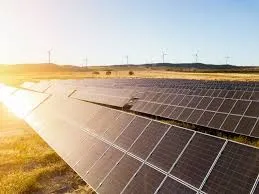Affordable Bifacial Solar Panels | Best Prices & Quality
Understanding Bifacial Solar Panel Prices and Their Market Trends
In recent years, bifacial solar panels have gained significant attention in the renewable energy sector. Unlike traditional solar panels that capture sunlight from one side, bifacial panels can absorb sunlight from both sides, effectively increasing their energy yield. As the demand for clean energy rises, many consumers and businesses are curious about the pricing of these advanced solar technologies. This article delves into the factors influencing the price of bifacial solar panels and the market trends associated with them.
The Technology Behind Bifacial Solar Panels
Bifacial solar panels utilize advanced photovoltaic cells that can generate energy from both direct sunlight and reflected light. This dual-surface functionality allows them to achieve higher efficiency rates compared to monofacial panels. Typically, bifacial panels can increase electricity production by 10% to 30%, depending on their installation conditions, such as the type of ground beneath them and the angle of installation.
Pricing Dynamics
The price of bifacial solar panels is influenced by multiple factors, including manufacturing costs, material quality, and market demand. As with many technological innovations, initial costs tend to be higher. As production scales and technology matures, prices are expected to decrease. Currently, the cost of bifacial panels ranges from $0.30 to $0.60 per watt, which is generally higher than the price of conventional solar panels.
solar panel bifacial price

Benefits Justifying the Cost
While the upfront costs of bifacial solar panels may be higher, their long-term benefits can justify the investment. Their ability to capture more sunlight translates to greater energy output, which can result in lower electricity bills and a faster return on investment (ROI). Furthermore, the durability of bifacial panels, often enhanced by their use of robust materials, can lead to reduced maintenance costs over the lifespan of the system.
Market Trends and Forecasts
The bifacial solar panel market is on an upward trajectory, driven by supportive government policies, advancements in technology, and heightened consumer awareness of renewable energy advantages. According to recent market studies, the global bifacial solar panel market is expected to grow significantly, with projections indicating a compound annual growth rate (CAGR) of over 20% in the coming years. Notably, countries with abundant sunlight, such as those in the Middle East and parts of Asia and Africa, are increasingly adopting bifacial technology for large-scale solar projects.
Conclusion
As bifacial solar panels continue to gain traction in the renewable energy landscape, understanding their pricing dynamics and market trends becomes essential for potential buyers and investors. While the initial costs may be higher than traditional panels, the advantages of increased energy yield and potential cost savings make bifacial technology an attractive option for many. As the market evolves and technology progresses, consumers can expect more competitive pricing, enhancing the feasibility of bifacial solar panels for residential and commercial applications alike. With an increasing push toward sustainable energy practices, bifacial solar panels stand out as a promising solution in the transition to a greener future.
-
String Solar Inverter: The High-Efficiency Solution for Smart Solar EnergyNewsJul.14,2025
-
Revolutionizing Rooftop Energy with the Power of the Micro Solar InverterNewsJul.14,2025
-
Power Independence with Smart Off Grid Solar Inverter SolutionsNewsJul.14,2025
-
On Grid Solar Inverter: Powering the Future with Smart Grid IntegrationNewsJul.14,2025
-
Monocrystalline Solar Panels: High-Efficiency Power for the Future of Clean EnergyNewsJul.14,2025
-
Bifacial Solar Panel: A Smarter Investment for Next-Generation Energy SystemsNewsJul.14,2025







